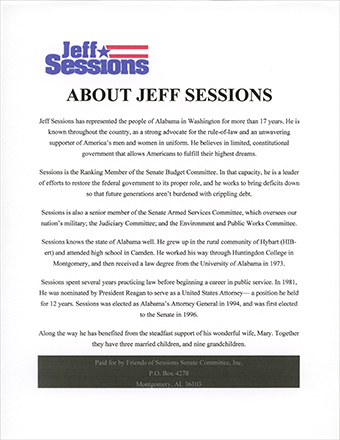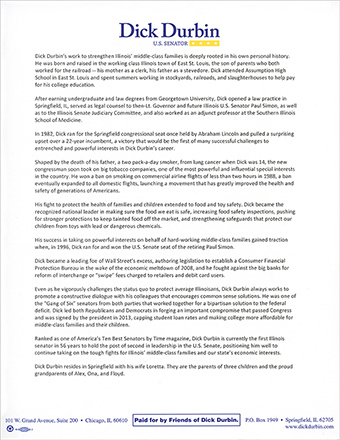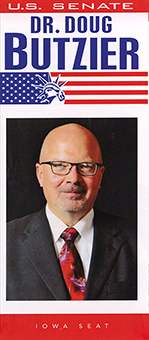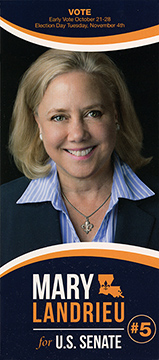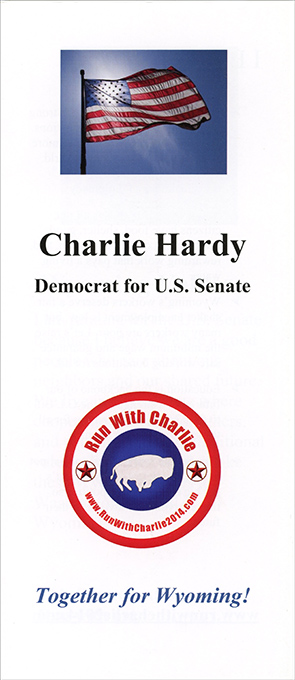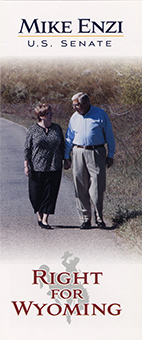- Democracy in Action « Campaign Literature Archive Main Page « 2014 Senate Races
| Nov. 4,
2014 Senate Races |
|
After
Nov. 4/Dec. 6: 54R,
44D,
2I.
|
Margin of Victory in Percentage
Points
*Seat changed
parties.
| 25.01
+ |
20.01-25.0 |
15.01-20.0 |
10.01-15.0 |
5.01-10.0 |
0-5.0 |
0-5.0 |
5.01-10.0 |
10.01-15.0 |
15.01-20.0 |
20.01-25.0 |
25.01
+ |
| RI 41.34 HI 42.07 |
MA 23.88 |
OR 18.86 |
MN 10.24 IL 10.68 NM 11.12 MI 13.28 NJ 13.51 DE 13.60 |
VA 0.81 NH 3.24 |
NC 1.56* CO 1.94* AK 2.13* |
GA 7.68 IA 8.34* |
KS 10.62 LA 11.87* |
KY 15.47 SC 15.48 AR 17.07* MT 17.72* |
SD 20.86* MS 22.01 SCs 24.02 |
TX 27.20 WV 27.65* TN 30.00 ID 30.66 NE 32.85 ME 36.96 OKs 38.87 OK 39.46 WY 54.74 AL 94.50 |
|
2014 SENATE RACE
OVERVIEW [more]
2014 was a standout year for Republicans. Needing a net gain of six seats to win control of the Senate, they gained nine seats. The map favored the GOP; Democrats were defending six seats in states Mitt Romney had won by large margins in 2012: Alaska (54.8 to 40.8), Arkansas (60.6 to 36.9), Louisiana (57.8 to 40.6), Montana (55.4 to 41.7), South Dakota (58.0 to 39.9) and West Virginia (62.3 to 35.5). They lost in all of those as well as North Carolina, which Romney narrowly won (50.4 to 48.4), plus Colorado and Iowa. A key issue in many of these races was Obamacare. Balance before Nov. 4: 53 Democrats, 45 Republicans and 2 Independents. 36 seats at stake: 21 held by Democrats, 15 by Republicans. 8 retirements: 5 Democrats, 3 Republicans. D: Tom Harkin (IA), Carl Levin (MI), Max Baucus (MT)*, Tim Johnson (SD), Jay Rockefeller (WV). R: Saxby Chambliss (GA), Mike Johanns (NE), Tom Coburn (OK). 0 incumbents defeated in primaries. 5 incumbents defeated in the general election: 5 Democrats. Mark Begich (AK), Mark Pryor (AR), Mark Udall (CO), Kay Hagan (NC), and Mary Landrieu (LA). 4 open seats flipped, all Democrat to Republican. IA (Harkin) Joni Ernst, MT (Baucus/Walsh) Daines, SD (Johnson) Mike Rounds, WV (Rockefeller) Shelley Moore Capito 13 new Senators elected: 12 Republicans, 1 Democrat. R: Dan Sullivan (AK), Tom Cotton (AR), Cory Gardner (CO), David Perdue (GA), Joni Ernst (IA), Bill Cassidy (LA), Steve Daines (MT), Ben Sasse (NE), Thom Tillis (NC), James Lankford (OK), Mike Rounds (SD) and Shelley Moore Capito (WV). D: Gary Peters (MI). Races won: Democrats 12, Republicans 24. Balance after Dec. 6 LA runoff: 54 Republicans, 44 Democrats and 2 Independents. |
||
HIGHLIGHTS
|
||
see also: campaign managers |
||
| THEMES Three themes stand out in the 2014 Senate literature: 1) Candidates of all parties agree Washington is broken. 2) With few exceptions, literature from Republican candidates has strong language against Obamacare. A few examples: "Voted more than 100 times to stop Obamacare and wrote legislation to repeal it." [Thad Cochran]. "Voted against Obamacare 23 times" [Lamar Alexander]. "Lindsey Graham fought against Obamacare from Day One and has repeatedly voted against it in the U.S. Senate." "Senator Inhofe is leading the charge against ObamaCare. This is the most dangerous liberal scheme ever perpetuated by Big Liberal Government. It must be gutted, repealed, defunded and replaced." 3) The Democratic literature does not have a lot to say about Obamacare; a major theme was protecting Social Security and Medicare. |
ADVERTISEMENT

